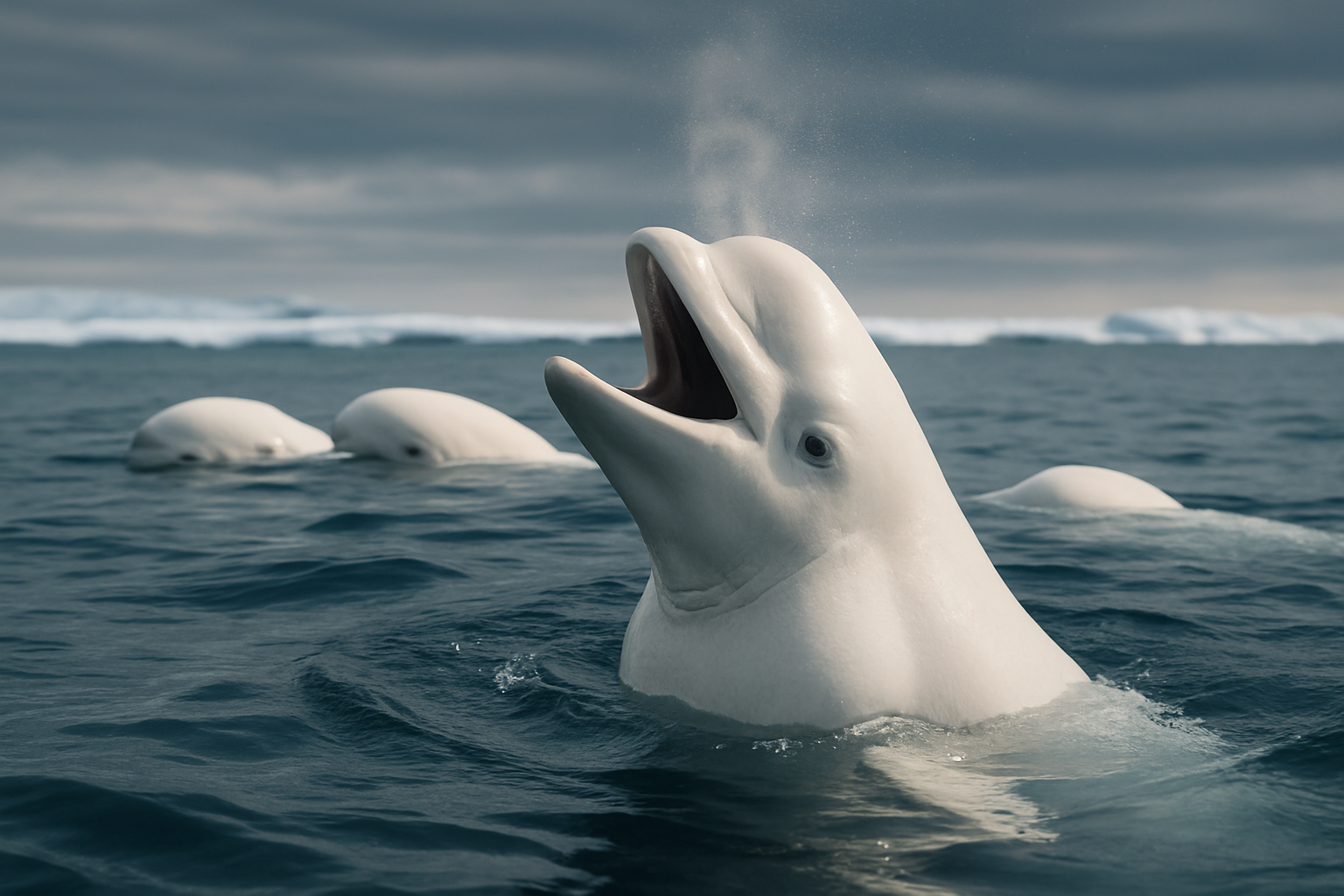Echoes of the Deep: The Surprising Vocal Talents of Beluga Whales
In the vast, icy waters of the Arctic, a symphony of chirps, whistles, and clicks resonates beneath the surface. These are not the sounds of machinery or human activity, but the intricate vocalizations of one of the ocean's most charismatic creatures: the beluga whale.

The Vocal Arsenal of Belugas
Belugas are equipped with an impressive array of vocal tools. Unlike many other whales that rely on their larynx for sound production, belugas use a structure called phonic lips located in their nasal cavity. This allows them to generate an astonishing variety of sounds, including whistles, squeaks, chirps, and even sounds resembling a creaky door or a child’s laugh.
Research has shown that belugas can produce vocalizations across a broad frequency range, from as low as 0.1 kHz to as high as 150 kHz. This range far exceeds human hearing capabilities, which typically max out around 20 kHz. The diversity and complexity of these sounds suggest that beluga communication is far more sophisticated than previously thought.
Social Chatter: The Purpose Behind the Noise
Belugas are highly social creatures, living in pods that can number in the hundreds. Their vocalizations play a crucial role in maintaining social bonds, coordinating group activities, and navigating their environment. Different types of calls serve various purposes:
Contact calls: These are used to keep track of pod members, especially in murky waters or when visibility is low.
Echolocation clicks: Belugas use these rapid-fire sounds to locate prey and navigate through their environment.
Alarm calls: When danger is detected, belugas emit specific vocalizations to warn the pod.
Courtship sounds: During mating season, males produce unique vocalizations to attract females.
Understanding these different types of calls has allowed researchers to gain insights into beluga behavior and social dynamics in ways that were previously impossible.
The Mimics of the Sea: Beluga’s Surprising Talent
One of the most fascinating aspects of beluga vocalization is their apparent ability to mimic sounds. Anecdotal reports from trainers and researchers have long suggested that belugas could imitate human speech and other artificial sounds. However, it wasn’t until recently that this ability was scientifically documented.
In a groundbreaking study published in 2012, researchers recorded a captive beluga named NOC producing sounds that resembled human speech. The whale had spontaneously begun making these vocalizations, which were described as sounding like two people conversing in the distance. This discovery opened up new avenues for research into cetacean cognition and vocal learning.
Implications for Conservation and Research
The vocal abilities of belugas have significant implications for both conservation efforts and scientific research. As climate change and human activities continue to impact Arctic ecosystems, understanding beluga communication becomes crucial for monitoring and protecting these populations.
Acoustic monitoring has become an invaluable tool for tracking beluga movements and assessing population health. By listening for their distinctive vocalizations, researchers can gather data on migration patterns, breeding grounds, and potential threats to their habitat.
Moreover, the study of beluga vocalizations has broader implications for our understanding of animal communication and cognition. The complexity of their vocal repertoire and their ability to mimic sounds challenge our perceptions of animal intelligence and raise intriguing questions about the evolution of language.
Challenges and Future Directions
Despite the progress made in understanding beluga vocalizations, many challenges remain. The Arctic’s harsh environment makes long-term studies difficult, and the vast range of beluga populations means that much of their behavior in the wild remains unobserved.
Future research directions include:
Developing more advanced acoustic monitoring technologies to capture the full range of beluga vocalizations in their natural habitat.
Investigating the potential for using artificial intelligence to analyze and interpret beluga calls, potentially unlocking new insights into their communication.
Exploring the cognitive processes behind beluga vocalization, particularly their ability to mimic sounds and potentially learn new vocalizations.
Studying how anthropogenic noise pollution impacts beluga communication and overall well-being.
As technology advances and our understanding grows, the echoes of beluga whales may reveal even more secrets of the deep, continuing to inspire and amaze us with their vocal talents.





